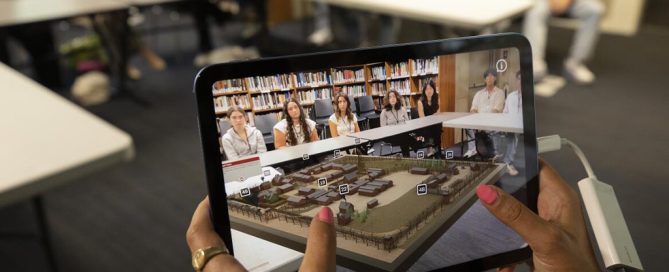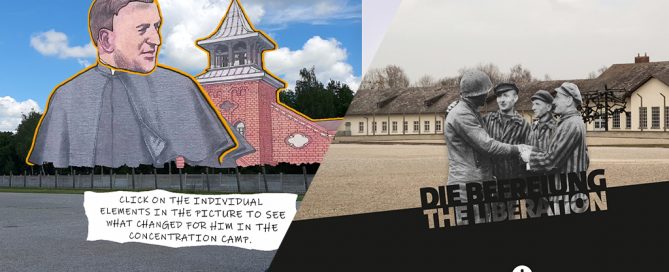New Sites of Memory Making: Augmented Reality and Holocaust Memory
By Prof. Victoria Grace Richardson-Walden Augmented Reality or ‘AR’ is still an emerging field in Holocaust memory. We explore examples from AR practice and theory and propose five recommendations for its future development. What do we mean when we talk about ‘augmented reality’ or ‘AR’ projects? Blancas et al. (2021) bring together several definitions which emphasise that AR does not refer to a singular medium or technology: Augmented Reality (AR) enriches the physical world with digital information, annotating reality and supplementing it with additional information (Feiner et al., 1997). A classical definition considers it a form of Mixed Reality (XR) in which a real-world view is supplemented by synthetic sensory input (Milgram & Kishino, 1994). For some authors, AR should fulfil at least three properties: combining real and virtual, interactive in real time, and registered in three dimensions (Azuma, 1997). An ideal AR system would make users believe the virtual and real objects coexist in the same space, blurring the frontier between real and virtual (Billinghurst et al., 2002). It might be best then to define augmented reality as: a particular mode of mediation, which produces a specific relationship between the body and the lived-world with and through media. [...]


